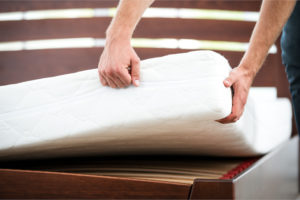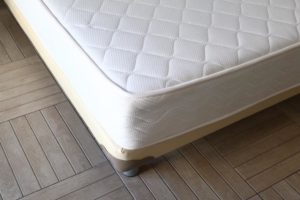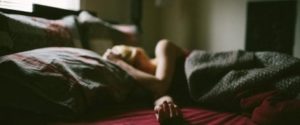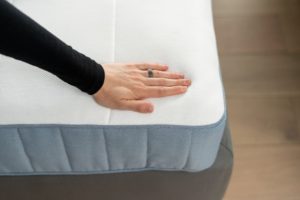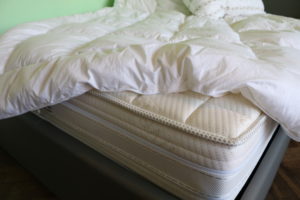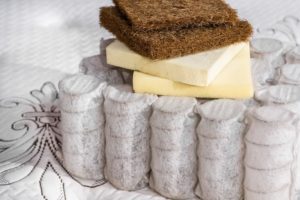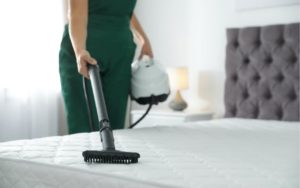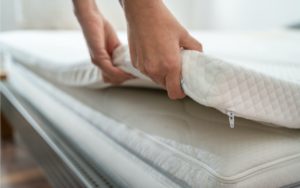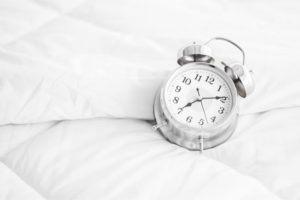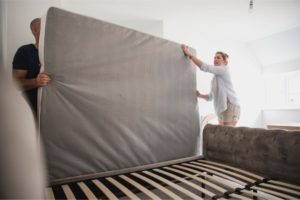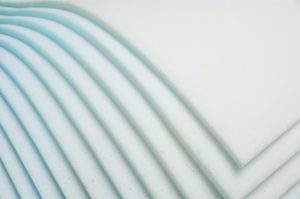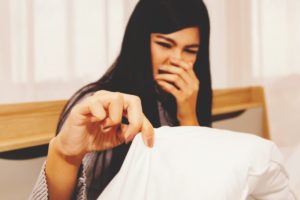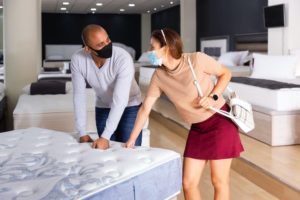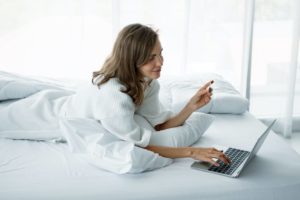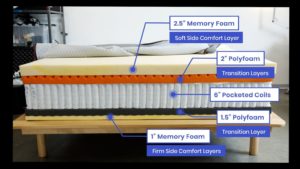When you buy through our links, we may earn a commission. Products or services may be offered by an affiliated entity. Learn more.
How to Fix a Hole in an Air Mattress
All air mattresses lose some inflation over time. But, if you’ve noticed that your air mattress doesn’t stay inflated or loses too much air, it probably means you have a hole. Luckily, air mattress repair is typically an easy process with either a patch kit or a DIY method.
To fix the leak, you need to locate the hole and clean the area. Then, use an adhesive and some plastic or vinyl patches to cover the leak. After letting the patch set for several hours, you can test the patch to ensure the mattress is no longer leaking.
We’ll cover the specifics about materials and steps you’ll need to know to repair your leaky air mattress.
Let us help you find the perfect bed
Answer a few questions to find the right mattress for your unique needs
How to Patch an Air Mattress
Patching an air mattress only takes a few steps and materials. After gathering what you need, you’ll go through the following steps:
1. Locate the hole
2. Clean the surface
3. Patch the hole
4. Apply pressure and allow to cure
5. Test seal
While these steps seem simple, some are more complicated. For example, it’s not always easy to find a tiny hole in an air mattress. Patching the hole requires some precision and patience. All in all, by following these steps, you can repair your air mattress and sleep comfortably on it again.
Materials and Tools You Will Need
- Gentle Cleanser: Dish soap or detergent helps with cleaning the area to be patched and with spotting the leak.
- Sponge or Cleaning Towel: You dampen the sponge or towel to cleanse the air mattress. It is also helpful when trying to find the hole.
- Tissue: Placing a single tissue or paper towel on the mattress helps you to spot escaping air.
- Manufacturer’s Patch Kit: Many air mattresses come with a patch kit. Generally, these kits contain an adhesive, applicator, and patches that match your air mattress material.
- Other Patch Kit: If your air mattress didn’t come with a kit or you can’t locate it, you can purchase air mattress patch kits online or at brick-and-mortar retailers. These kits come with the same basic materials as the manufacturer’s kit. You may consider buying a kit with patches that match the material and color of your air mattress.
- Thin Plastic Material: If you aren’t using a kit, you need to craft a patch out of some thin plastic material. A shower curtain liner or other durable plastic will suffice.
- Adhesive: You also need an adhesive if you’re not using a patch kit. Consider using a strong glue, preferably one meant for plastic or one that dries air tight.
- Flat, Heavy Object: After applying the patch, place this object on the mattress to allow the patch time to cure and adhere. Consider using a book or box filled with heavy items.
Step One: Locate the Hole
Sometimes, it’s easy to identify that your air mattress has a leak, but it can be difficult to find the hole. There are some steps you can take to locate the leak.
First, lay the mattress flat on the ground and inflate it. Once it’s inflated, visually inspect it for any damage. If you see any scuffs or tears, confirm the location of the leak by placing your hand over the area and feeling for escaping air. Inspect the seams and air intake areas as well, as these are common areas for holes to develop.
If there are no visible issues, run your hand over the surface of the entire mattress to see if you can feel any air escaping. Next, lay on top of the mattress with your ear pressed against the surface. Listen for the sounds of an air leak.
The next method involves a single tissue or paper towel. Starting in one corner, place the tissue on the surface of the air mattress. Then, gently press down on the mattress and direct air toward that corner. Continue this method by moving the tissue into different areas of the mattress and directing air toward it. If the tissue blows upward, you know that the air leak is near.
Lastly, you can try the soapy water method. For this you’ll need a damp sponge or cloth and a gentle cleanser. Apply the cleanser to the sponge and use some friction until soap bubbles appear. Then wipe the sponge over one part of the mattress, press down, and direct air toward that area. If you see growing bubbles, you’ll know that you’ve found the hole.
Step Two: Clean the Surface
To ensure that the patch and adhesive stick to the surface, it’s best to clean it. Using a wet cleaning cloth, moisten the area around the leak. Then apply a gentle cleanser like dish soap or detergent and use the cloth to gently scrub the surface.
Rinse off the cloth and use it to wipe away the soap from the mattress. Let the surface air dry completely before attempting to patch the hole.
Step Three: Patch the Hole
If you’re using a manufacturer or third party patch kit, follow the instructions provided for patching up the hole.
For those fixing the leak with household objects, the first step is to deflate the mattress. Lay it on a flat surface with the hole in a prominent position. Cut out a patch from the plastic material. Generally, you want the patch to be big enough to cover the hole with an added half-inch of plastic around the hole.
Place a layer of adhesive around the outer edge of the patch. Carefully press the patch onto the surface of the air mattress, completely covering the hole. Make sure that glue does not seep through the hole down onto the bottom layer of the mattress, as this could cause a new hole to form the next time you inflate the mattress.
Step Four: Apply Pressure and Allow to Cure
To make sure that the patch stays in place, it is important to apply pressure and give the patch time to set. Place a flat object like a heavy book or box on top of the patched area. This will keep the patch from slipping and make sure that the adhesive fully clings to the surface. Ensure that there is not any excess glue around the edges of the patch that could possibly cause the mattress to adhere to the heavy object.
Leave your air mattress like this to cure for about 8 hours before removing the heavy object and checking the patch.
Step Five: Test Seal
Now that the patch has been applied and has had time to adhere, the next step is to test the seal. This will ensure that the leak has been repaired and that you won’t have a deflating air mattress the next time you use it.
Fully inflate the mattress. Lay it on the ground and press on it, directing air toward the patch. Feel or listen for any escaping air. If the seal seems tight, lay on the mattress for a few minutes to see if it begins to deflate. If the air mattress does not appear to be losing air, then the hole has been fixed.
If you do notice air escaping from the patch, attempt to remove it and then repeat Steps 2 through 5. If the patch seems secure but the mattress is still losing air, you may have a second hole. Start from the beginning to locate the second leak and repair it.

Still have questions? Ask our community!
Join our Sleep Care Community — a trusted hub of sleep health professionals, product specialists, and people just like you. Whether you need expert sleep advice for your insomnia or you’re searching for the perfect mattress, we’ve got you covered. Get personalized guidance from the experts who know sleep best.







